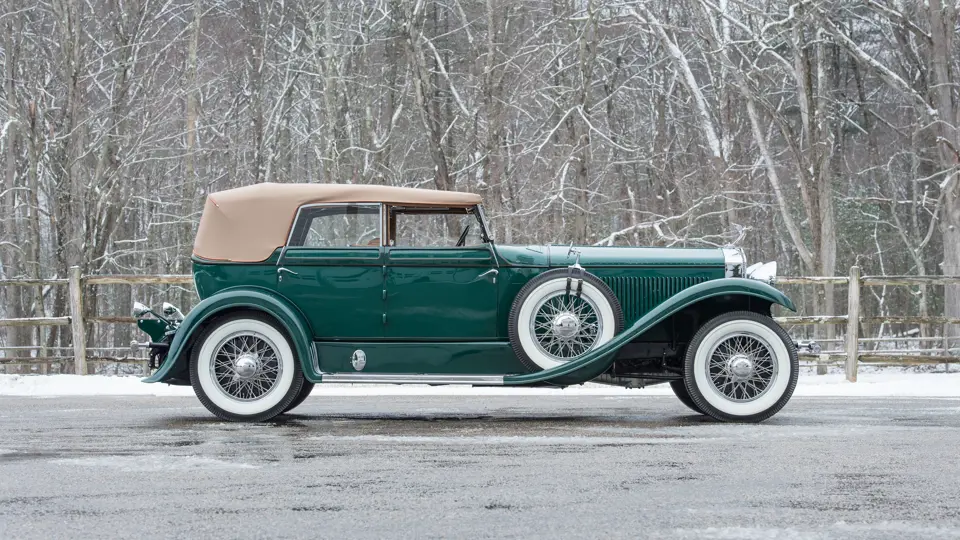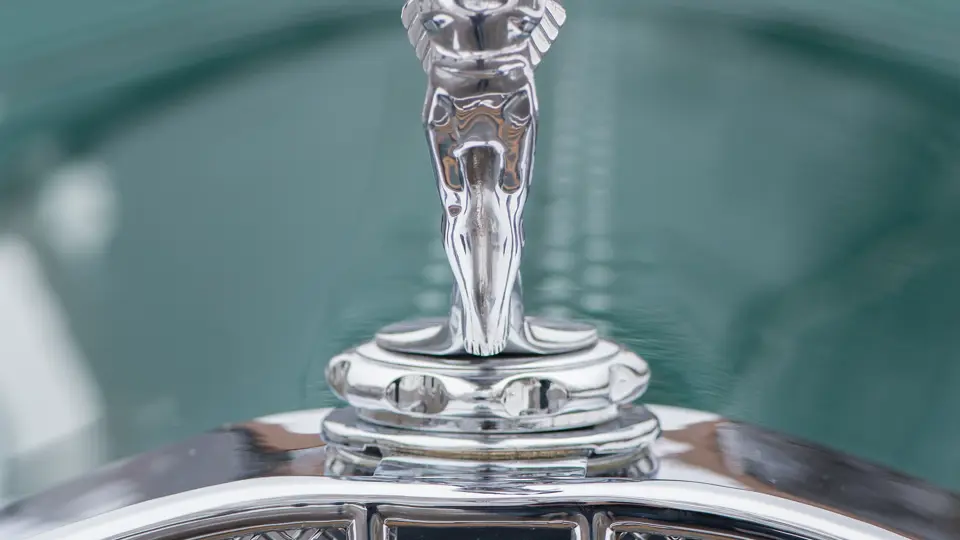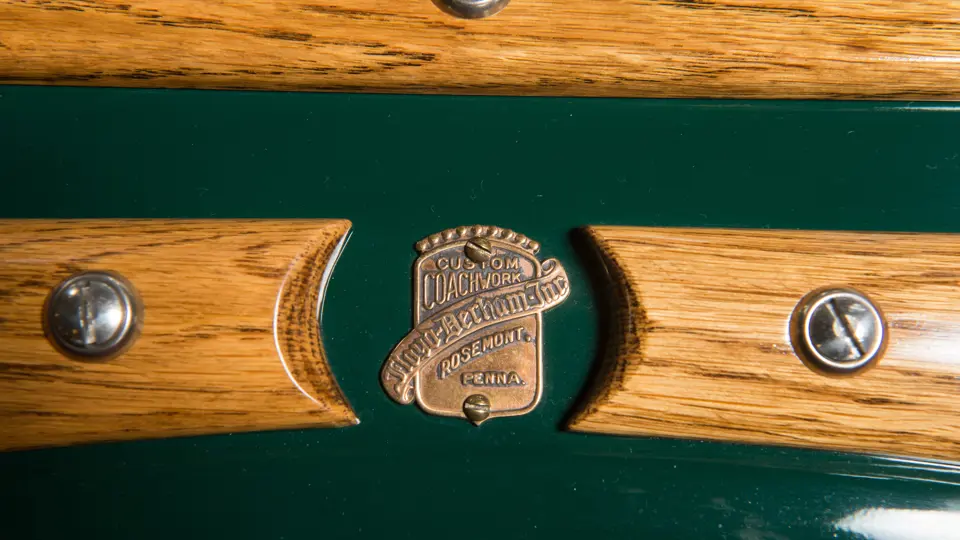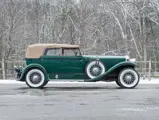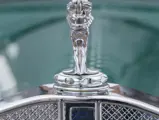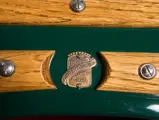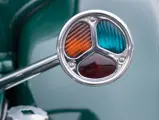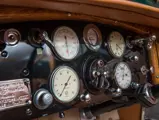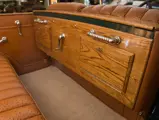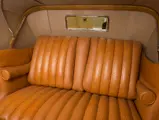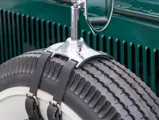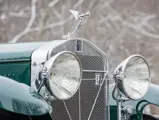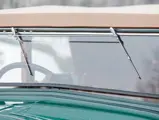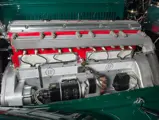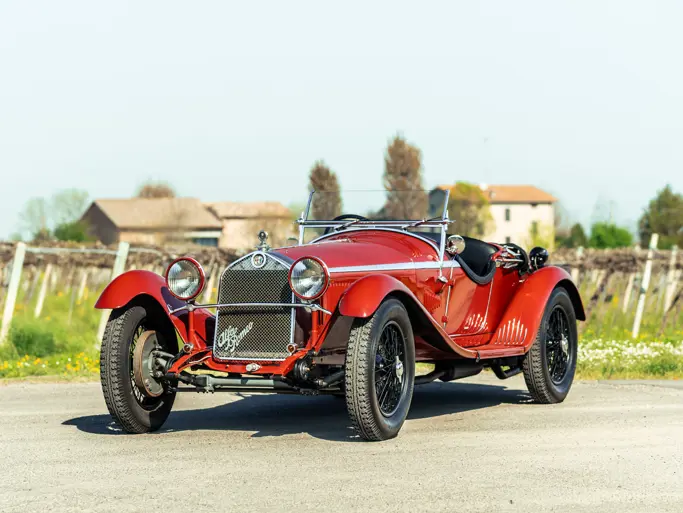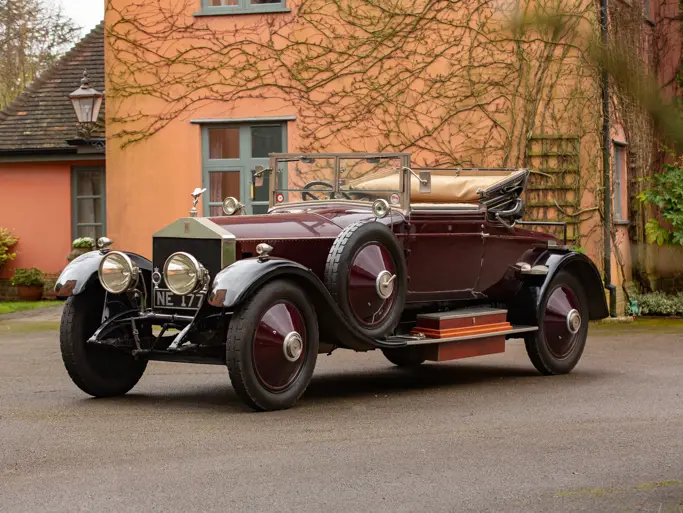110 bhp, 7,370 cc L-head eight, three-speed manual transmission, solid front axle with semi-floating rear axle and semi-elliptic leaf springs in the front and rear, and four-wheel Dewandre vacuum servo-assisted mechanical drum brakes. Wheelbase: 146 in.
The Eight-Cylinder Isotta Fraschini
Società Milanese Automobili Isotta, Fraschini & C. was founded on January 27, 1900. The firm was focused on the assembly of Renaults before advancing to production of its own namesake automobile. Early production focused on high horsepower cars, veritable fire-breathers that achieved celebrity in the crucible of racing. Of early note is Isotta’s victory in the 1908 Targa Florio. In 1919, the firm established itself as a luxury manufacturer with the introduction of the Tipo 8, which became the first production car to feature a straight-eight engine. The successor to the 5.9-liter Tipo 8 was the 8A, which had a 7.3-liter straight-eight that produced a respectful 110 horsepower.
The Floyd-Derham Company
With the passing of Derham’s founder, Joseph J. Derham, in 1928, a rift between his three sons was exposed, which would change the makeup of the company. Son Philip wanted the firm to modernize and expand, while siblings James and Enos remained in favor of running the firm just as it had been with their father at the helm. Philip left the Derham Body Company in 1928 and utilized the backing of William Floyd, a European car importer based in Bryn Mawr, Pennsylvania. Philip Derham was responsible for the design and drafting work, and the actual body production was carried out by the well-known Alexander Wolfington, Son & Company.
Just prior to the stock market crash of 1929, the Floyds imported car business began to falter, and they withdrew their support of the nascent coachbuilding firm, despite the fact that there were orders to fill. These were ultimately completed by Wolfington, with the help of the Derham Body Co. Although short-lived, the firm did manage to produce two vehicles for display. One of those was a Minerva Town Cabriolet, displayed at the Chicago Salon in the fall of 1928, which is now part of the Nethercutt Collection. The second car is this Isotta Fraschini Convertible Sedan, chassis 1571, which was displayed at the New York Auto Salon in December.
Chassis 1571: The Floyd-Derham Convertible Sedan
This example was clothed as a convertible sedan by Floyd-Derham for presentation at the December 1928 New York Auto Salon. It is pictured on page 42 of Hugo Pfau’s The Custom Body Era, using a photo taken from the firm’s advertisement in the salon catalogue.
After the show, the car went into private ownership and next appeared in the collection of early enthusiast Paul F. Cofrancesco, of New Britain, Connecticut, who was actively purchasing these magnificent, used, pre-war masterpieces in the 1940s and ’50s. A graduate of the Yale School of Fine Art, Paul was an accomplished artist and musician, and he was also a friend of Rudolph Valentino. Perhaps it was Valentino’s association with the Isotta Fraschini marque that fueled Cofrancesco’s interest, because he ultimately had four of them in his collection.
Cofrancesco came to the attention of fellow pioneer collector Anthony Pascucci, of Meriden, Connecticut, who tried many times over the years to acquire the cars. Ultimately, well-known collector and operatic tenor Sergio Franchi got involved in the chase, and the two ultimately convinced Mr. Cofrancesco to part with his cars around 1975.
As unearthed from the garage in New Britain, this example was still finished in its original color scheme of Butterscotch with yellow fenders and belt line. Mechanically recommissioned, it remained largely original through the subsequent ownership of Bill Lassiter, Sonny Abagnale, and the Imperial Palace. After being acquired by the current owner, it was entrusted to Reinhold’s Restorations, of Reinhold, Pennsylvania, for a thorough body-off restoration.
The work, which was performed between 2006 and 2008, saw the body stripped down to the bare chassis and all of the components rebuilt and refinished. The engine, transmission, and rear end were fully disassembled and rebuilt with all-new gaskets and seals. In addition, new high-compression aluminum pistons and rings were fitted. In the process of restoration, every piece of chrome was replated, and the wheels were fully rebuilt and balanced by the Dayton Wire Wheel Company.
Now finished in Green with Forest Green fenders and belt molding, it has a tan cloth top and a brown leather interior with ostrich seat inserts. The chromed wire wheels are shod with whitewall tires, and the radiator stone guard, which is nearly unique on every Isotta Fraschini, depicts a point-down triangle divided down the middle. Some interesting features of this example are the tubular bar-type bumpers, the wood ribs on the front splash apron, and the upward curve of the door, which reaches up almost imperceptibly to match the height of the cowl. The long belt molding traverses the length of the hood and then splits at the cowl and continues down the side of the body, where it rejoins and dips down sharply to allow room for the convertible top to fold down. The rear contains additional room for a stationary trunk rack and trunk. Fastidiously restored, this is the sole example of Floyd-Derham coachwork on an Isotta Fraschini chassis; it has yet to be publicly shown and promises the potential of praise on the show field.

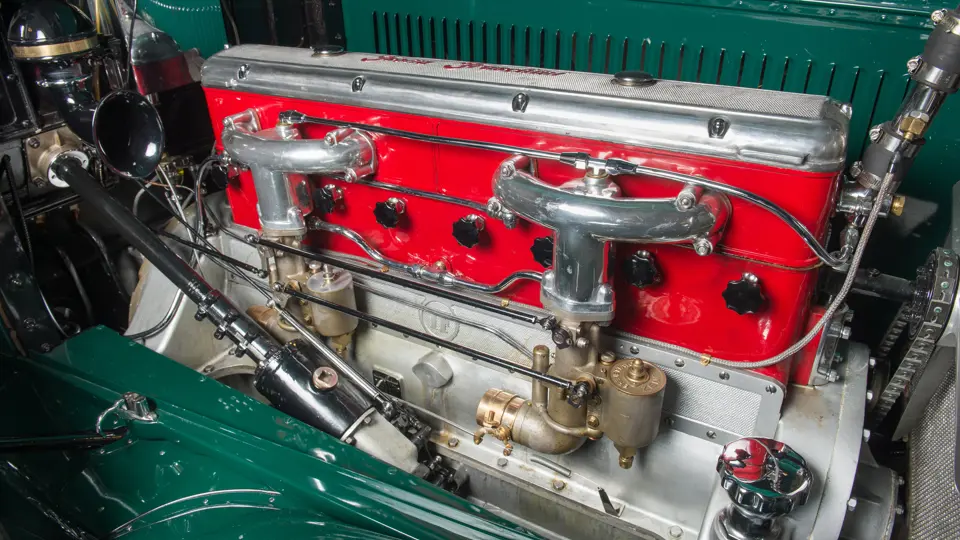
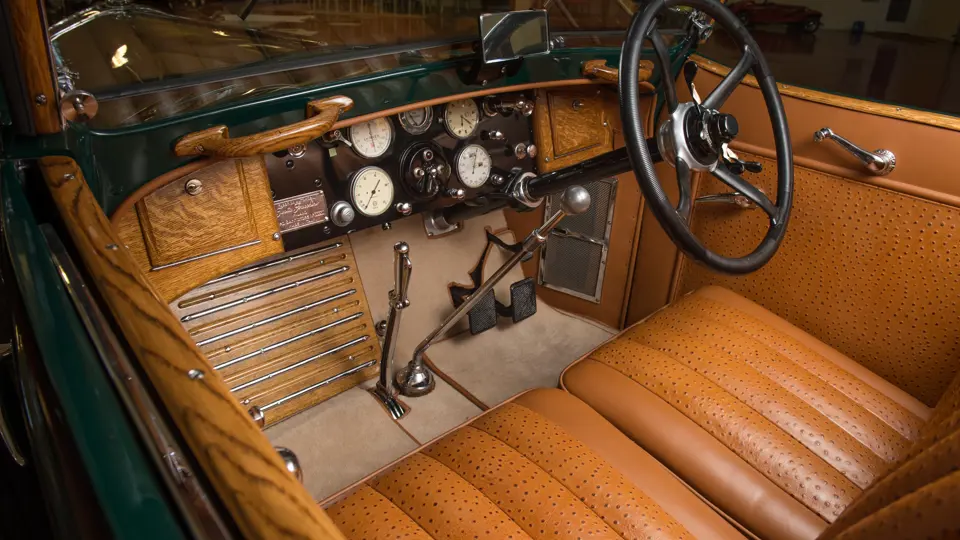

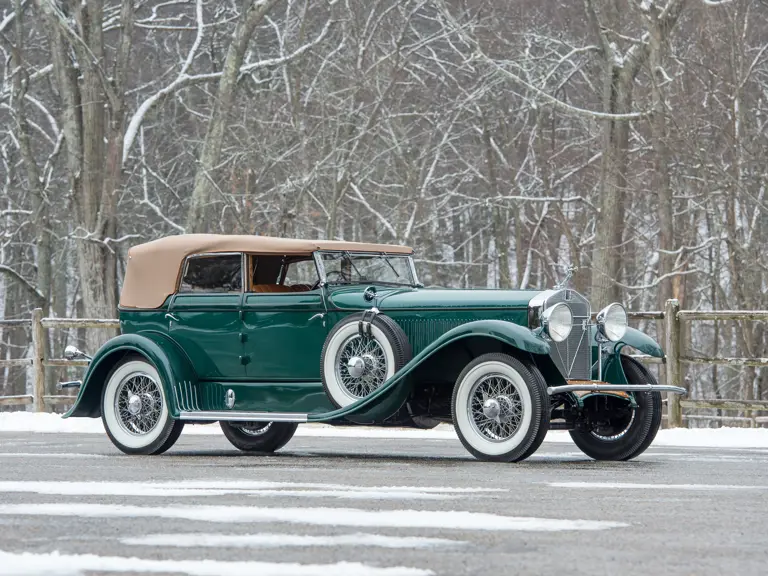
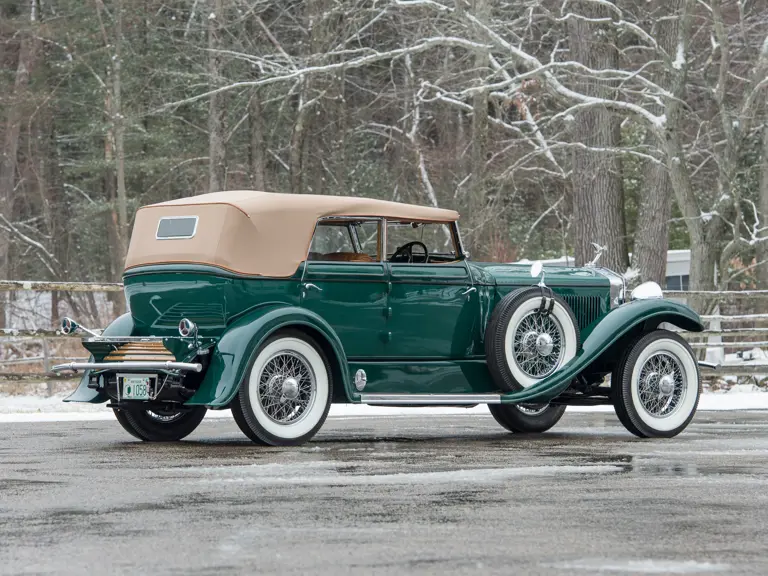
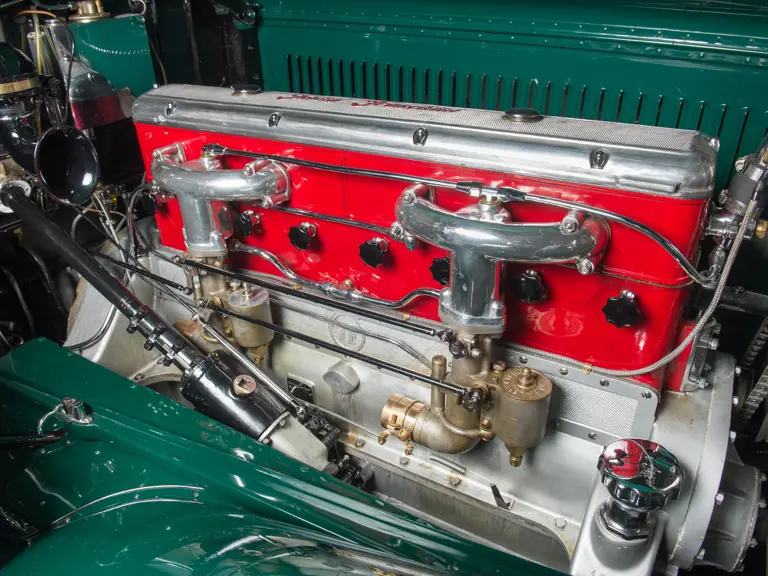
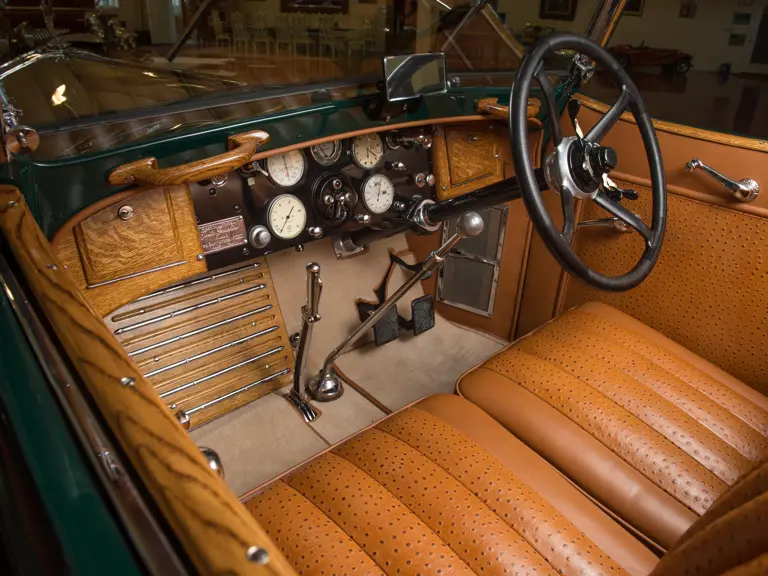
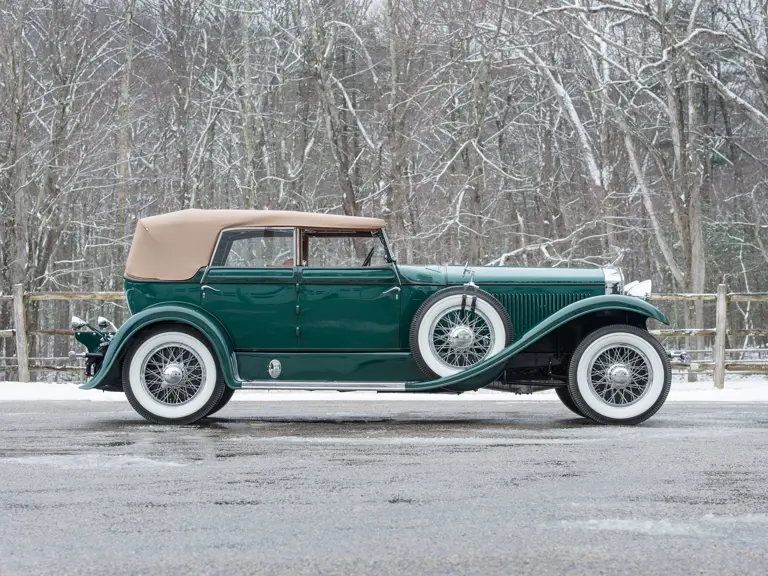

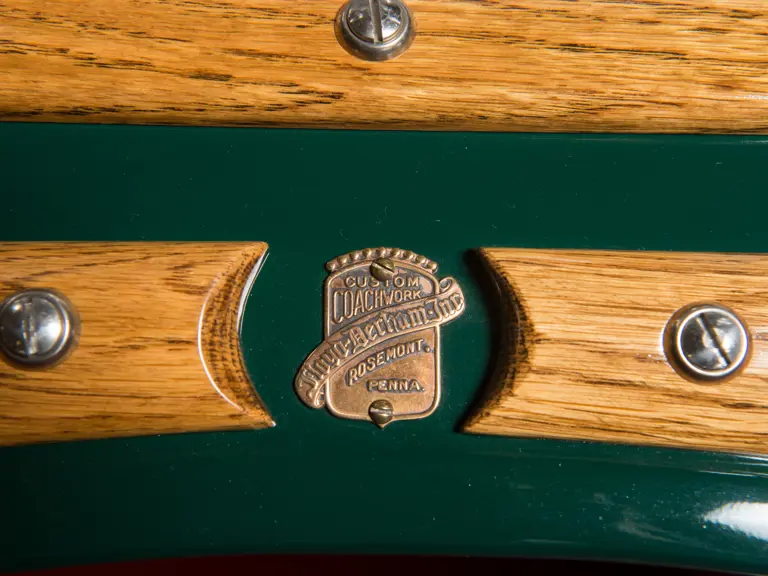
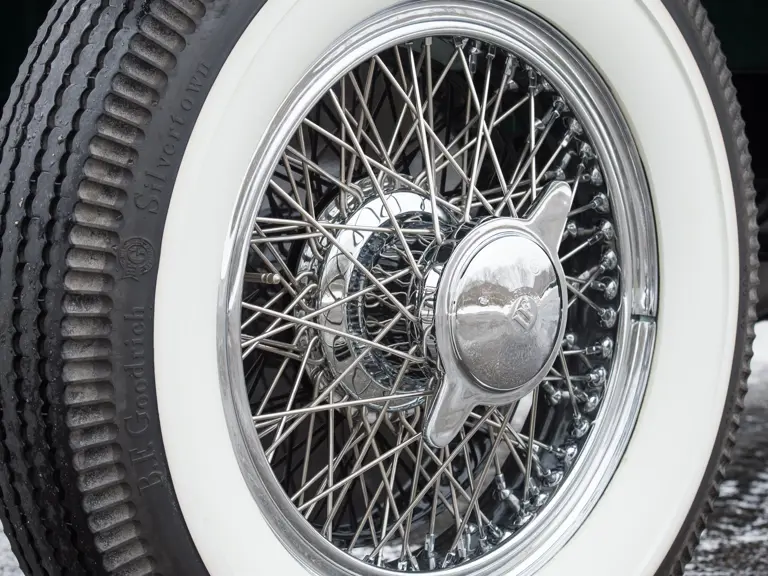
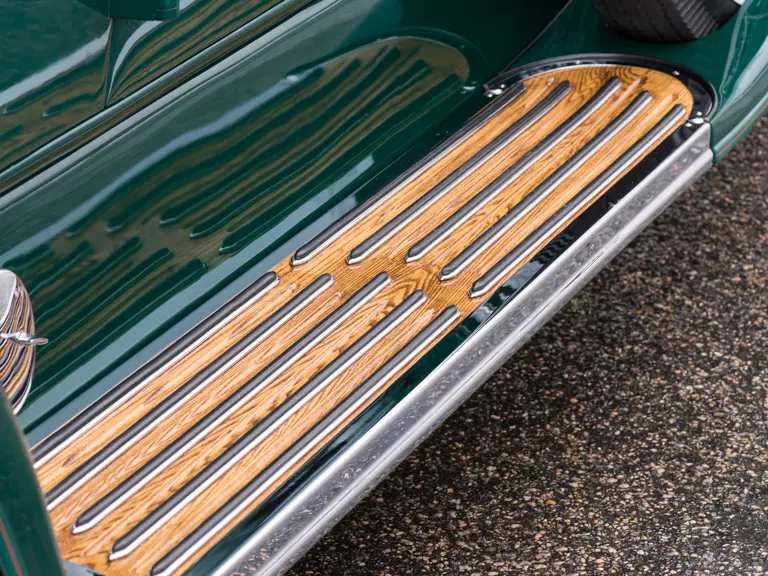
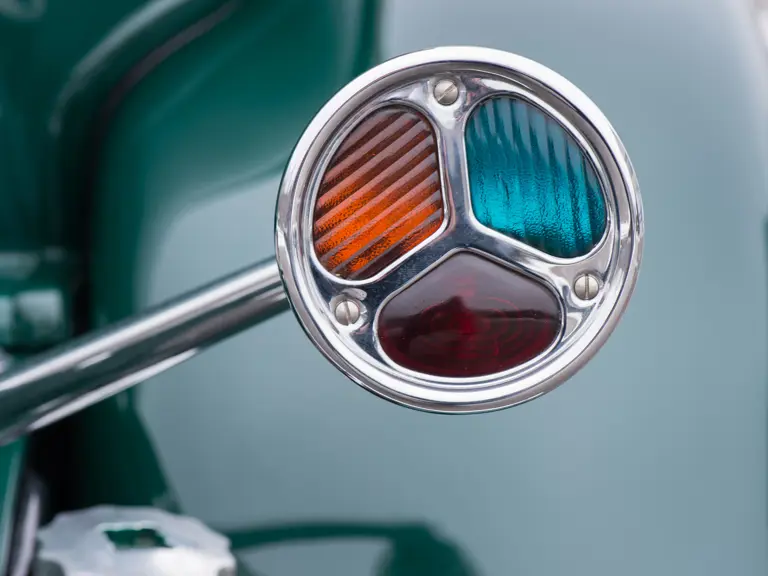
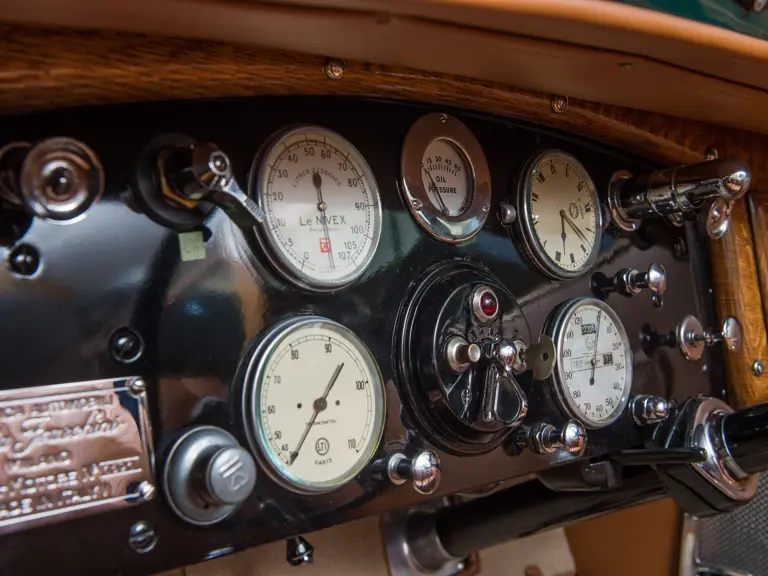
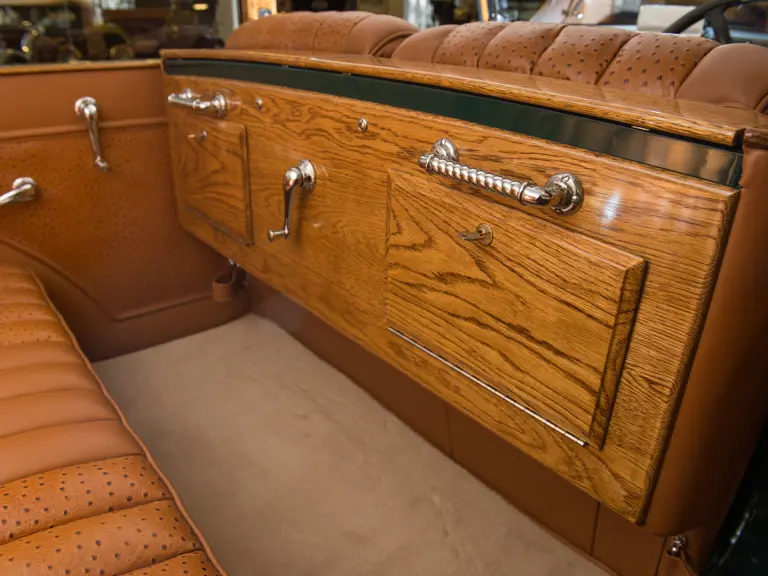
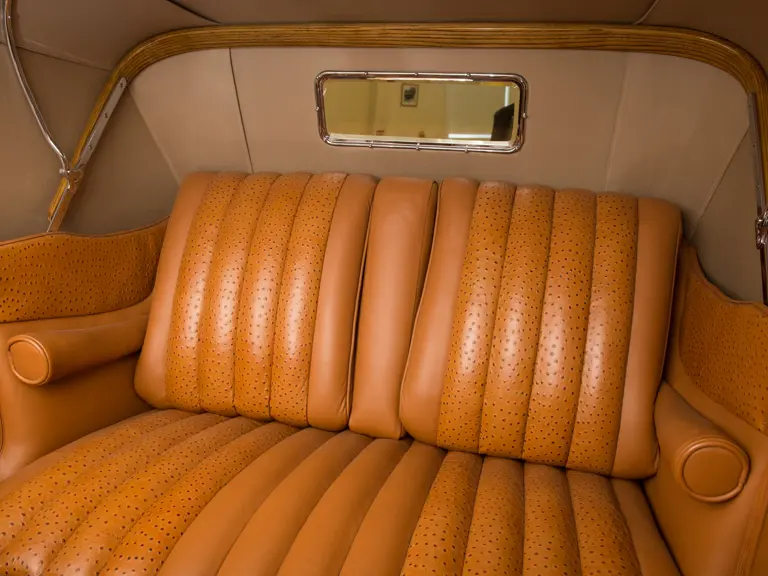

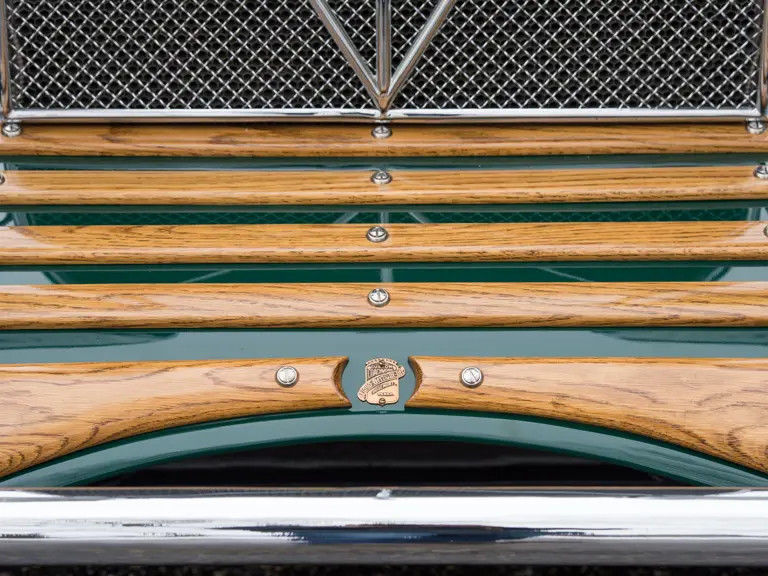


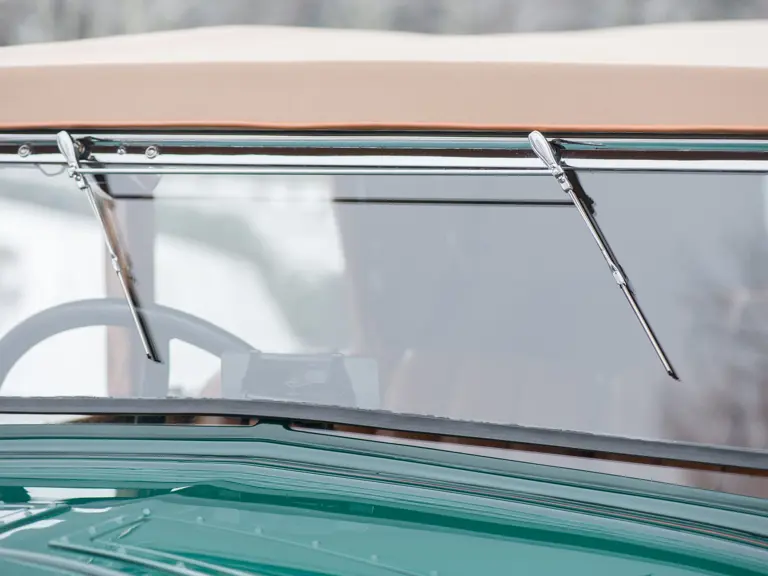
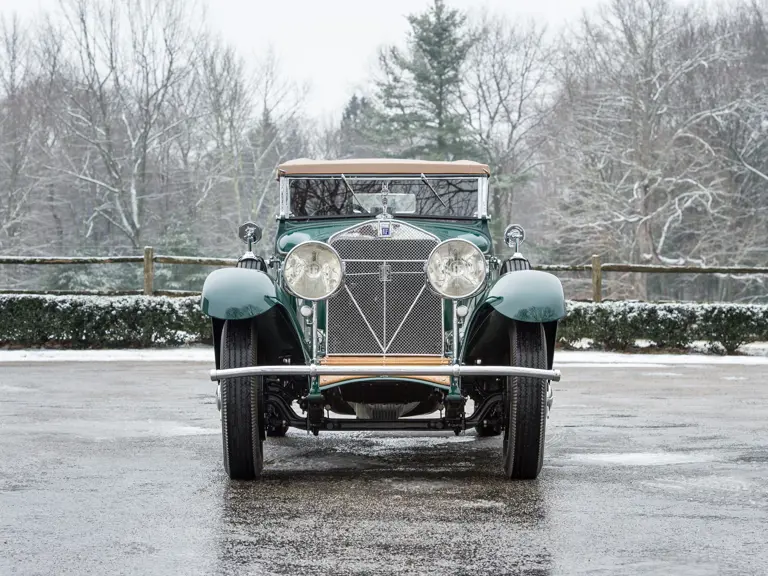
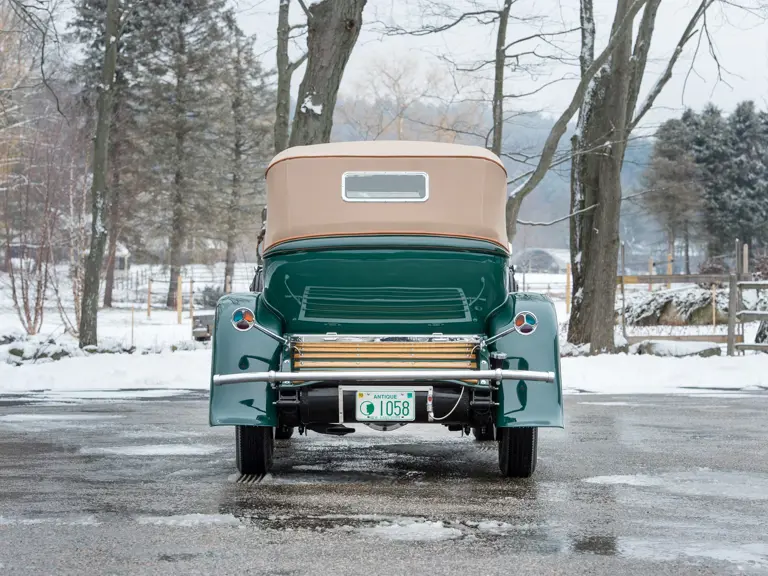

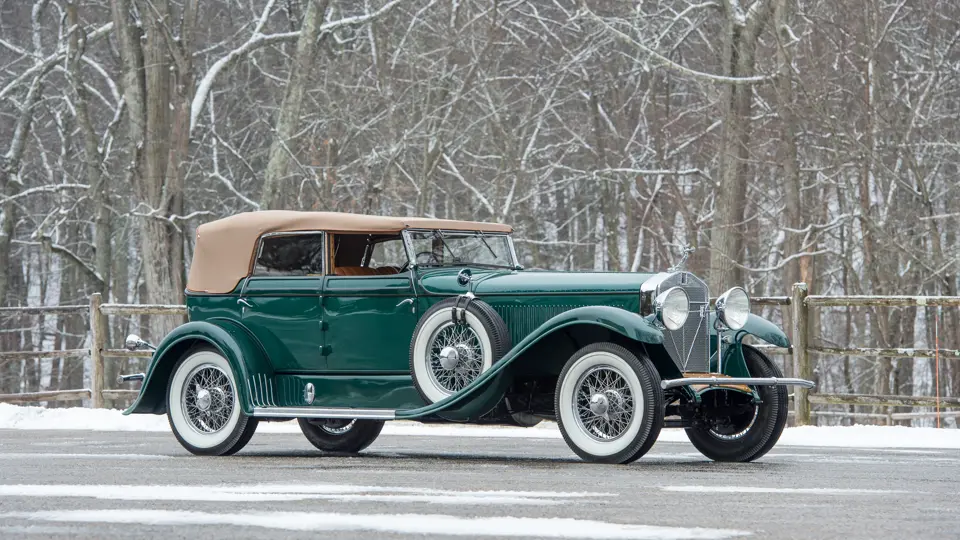
 | Amelia Island, Florida
| Amelia Island, Florida
